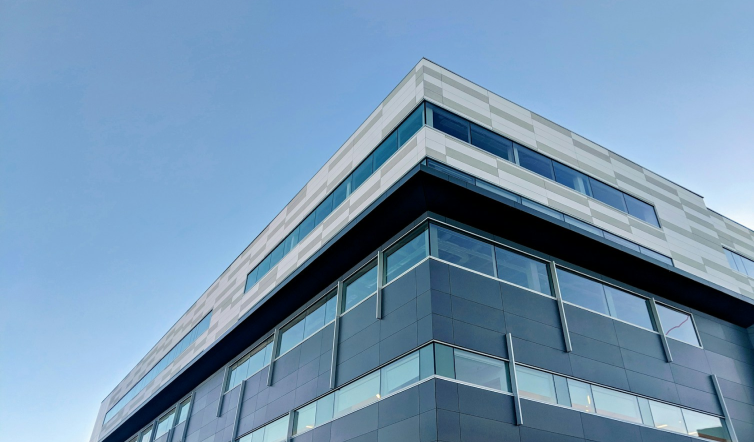Commercial Property Maintenance Strategies for Optimal Building Performance

Commercial property maintenance involves the regular upkeep and repair of commercial buildings to ensure safety, functionality, and appearance. It directly impacts the property’s value and tenant satisfaction, making it a critical aspect of managing commercial real estate. Effective maintenance prevents costly emergencies and extends the life of key building components.
Property owners and managers must address a range of tasks, from routine inspections to seasonal maintenance and timely repairs. Using preventive strategies and technology can streamline these efforts and reduce long-term costs. This proactive approach helps avoid disruptions and maintain a professional environment for businesses and visitors.
Understanding the key elements of commercial property maintenance equips stakeholders to make informed decisions. Knowledge of essential services, costs, and best practices supports better planning and resource allocation, ultimately protecting the investment and improving operational efficiency.
Core Aspects of Commercial Property Maintenance
Effective commercial property maintenance requires focused efforts across multiple areas to ensure building longevity, functionality, and tenant satisfaction. Addressing potential issues early and maintaining critical systems optimizes costs and minimizes disruptions.
Preventive Maintenance Strategies
Preventive maintenance involves scheduled inspections and servicing to address problems before they escalate. Property managers should develop detailed checklists that cover HVAC systems, plumbing, electrical components, and structural elements.
Routine tasks include cleaning filters, lubricating moving parts, and checking for wear and leaks. Using building analytics can help identify trends and predict failures, enabling timely interventions.
A documented maintenance schedule improves accountability and helps track completed work. This proactive approach reduces emergency repairs and extends the lifespan of building assets.
Building Systems and Equipment Upkeep
Maintaining building systems is critical to operational efficiency and safety. This includes HVAC units, elevators, fire alarms, and electrical panels. Each system requires specific care protocols based on manufacturer guidelines and industry standards.
Regular testing and calibration ensure systems function correctly, preventing downtime and ensuring compliance with safety codes. Early detection of faults in equipment like boilers or chillers reduces energy expenditures and repair costs.
Engaging qualified technicians for inspections and repairs guarantees quality and adherence to regulations. Keeping detailed records supports budgeting and helps plan future upgrades.
Exterior Maintenance and Landscaping
The building’s exterior plays a significant role in curb appeal and structural protection. Routine inspections should focus on the roof, façade, gutters, and foundation for signs of damage or wear.
Landscaping requires regular mowing, trimming, and irrigation system checks to maintain aesthetic standards and prevent structural damage caused by overgrown vegetation.
Seasonal tasks, such as snow removal or leaf clearing, are essential to safety and accessibility. Addressing exterior maintenance promptly helps avoid costly repairs and preserves property value.
| Task | Frequency | Purpose |
| Roof and gutter inspections | Quarterly | Prevent water damage |
| HVAC filter replacement | Monthly | Ensure air quality and efficiency |
| Landscaping maintenance | Weekly/Seasonal | Enhance appearance, prevent damage |
Best Practices for Managing Commercial Properties
Effective management requires careful coordination of service providers, routine property evaluations, and strict adherence to legal standards. Each element impacts property condition, tenant satisfaction, and long-term operational costs.
Vendor Selection and Oversight
Choosing reliable vendors is critical. Property managers should vet contractors based on experience, license validity, and insurance coverage. Maintaining a database of trusted vendors allows for quick response to maintenance needs.
Regular performance reviews ensure vendors meet quality standards and deadlines. Establishing clear contracts with detailed scopes of work and penalties for non-compliance helps mitigate risks.
Oversight involves frequent communication and random inspections to verify completed work. This approach prevents costly errors and ensures consistent service delivery.
Scheduled Inspections and Reporting
Routine inspections are essential to identify potential issues before they escalate. Property managers should use detailed checklists tailored to each building system, such as HVAC, plumbing, and electrical components.
Inspections must be scheduled seasonally or annually depending on equipment type and local weather conditions. Automated reminders and digital reporting tools improve accuracy and record-keeping.
Reports from inspections should highlight urgent repairs, routine maintenance tasks, and safety concerns. Consistent documentation supports budgeting and regulatory compliance.
Compliance with Health and Safety Regulations
Compliance with regulations prevents legal penalties and protects occupants. Property managers must stay updated on building codes, fire safety, environmental laws, and accessibility standards.
Implementing routine safety audits and staff training programs ensures adherence to all applicable laws. Corrective action plans must be in place to address violations promptly.
Records of inspections, maintenance, and training should be maintained systematically. This documentation serves as evidence during audits and insurance reviews.


